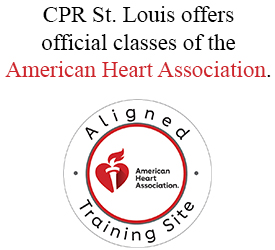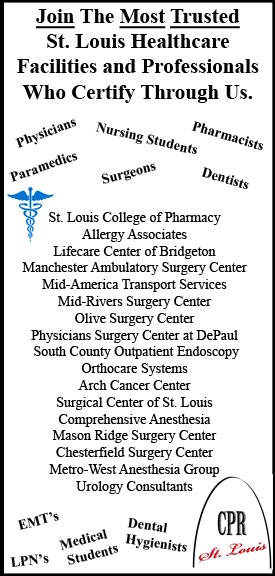Here you will find a collection of papers and articles specifically on the health and disease of the heart and cardiovascular system researched by college students. These papers were written to help educate the average person who is searching for more information about the cardiovascular system.
_________________________________________________________
Cardiac Arrhythmias by Claire Perry, Part V
Cardiac Ablation is also a procedure where catheters are inserted into the heart. This technique of detecting heart arrhythmias is where high frequency energy is delivered into the heart tissue. The goal of this process is burn off the irregularly firing tissue inside the blood vessels of the heart, and stop these electrical impulses from interfering with the hearts normal electrical activity. This process restores the normal electric pathways through the heart and allows it to beat normally again (Boston Scientific, 1).
Cardiac Arrhythmias by Claire Perry, Part IV
To diagnose a heart arrhythmia, heart-monitoring tests are used to detect which arrhythmia is present. Some of these tests include Electrocardiogram (ECG), Holter monitor, Event monitor, Echocardiogram, Cardiac computerized tomography (CT) and Magnetic Resonance Imaging (MRI). During an ECG, electrode patches are placed on the chest and limbs to detect the electrical activity of the heart. A Holter monitor is simply a portable ECG device that can be worn for a day or more to record the heart’s activity during a normal day’s routine. An event monitor is used only when symptoms of an arrhythmia are occurring. This device measures the heart rhythm at the time of the symptoms have arose.
Cardiac Arrhythmias by Claire Perry, Part III
Without an effective heartbeat, however, blood pressure decreases rapidly, instantly cutting off blood supply to the vital organs including the brain. Most people in ventricular fibrillation lose consciousness within seconds and require immediate medical attention including cardiopulmonary resuscitation or CPR. The chances of survival are increased with CPR but with ventricular fibrillation, the heart must be shocked in order to try and stimulate the electrical activity of the heart so it can beat again on its own. If the heart cannot be stimulated by the shocks delivered, death will result within minutes.
Cardiac Arrhythmias by Claire Perry, Part II
Cardioversion is often a treatment for A-fib. A cardioversion is where an electrical shock is used to reset the heart to its regular rhythm. Usually this procedure is done in a hospital or doctor’s office, and the patient is given medication to relax them during the duration of the procedure so there’s no pain involved. There are also anti-arrhythmic drugs available, although these medications do not cure the arrhythmia, they can reduce the episodes of tachycardia or slow down the heart when an episode does occur.
Cardiac Arrhythmias by Claire Perry, Part I
An arrhythmia is defined as any variation from the normal rhythm in the heartbeat. When the heart beats, the electrical impulses that cause it to contract follow a specific pathway through the heart. Heart arrhythmias occur when the electrical impulses that control the heartbeat do not work properly, causing the heart to beat either too fast, too slow, or irregularly. The heart is divided into four compartments, two top compartments (also known as atria) and two lower compartments (known as ventricles).
Congestive Heart Failure by Donna Columbus
Congestive heart failure is separated and classified by the two sides of the heart because left side failure reflects the decrease of blood flow to the body and brain. While right side failure compromises pulmonic flow to the lungs. Although these two can be separated they can also be failing at the same time. The degree of illness is used because many people suffer from heart failure…
Brain Aneurysm by Brittany Blumer
Brain aneurysms are most often found in the arteries that are located at the base of the brain. They usually form where the arteries branch off in different directions because these are the areas where the artery is the weakest. A brain aneurysm develops when the walls of an artery begin to become thinner and weaker. Some of the things that can increase the rate of weakening arteries are smoking, high blood pressure, head injury…
Coronary Heart Disease by Laura Boland
Coronary heart disease (CHD) is the number one leading cause of death in the United States in both men and women. The coronary arteries are responsible for bring oxygen and blood to the heart. This disease is caused by a build up of plaque and other substances that form a blockage in your artery, causing it to narrow and slow down or completely cut off the flow of oxygen and blood to the heart; this could cause a heart attack and/or death. The build up of plaque can
What are the 2 Kinds of Strokes by Vera Kozlova
A stroke can be treated by medicines and medical procedures. Tissue plasminogen activator (tPA) is a medicine that is injected into a vein in the arm. Another medicine is an antiplatelet medicine. It helps stop platelets from forming blood clots. Lastly, a doctor can subscribe anticoagulants, or “blood thinners”. They help keep blood clots from …
What is Angina Pectoris by John Merz
Angina Pectoris is the title given to chest pain due to a lack of blood supply to the heart. The name comes from the Latin words angere, meaning to choke or strangle, and pectus, meaning chest. This pain is commonly confused with the onset of a heart attack. Though chest pain is a sign of a heart attack occurring, angina pectoris is not a heart attack. This pain is caused by …
Heart Defect: Aortic Stenosis by Sheena Patel
One of the more common types of congenital heart disorder is the aortic valve stenosis or aortic stenosis. This condition is present at birth and occurs in about 2% of the population. In people that have this condition, the heart’s aortic valve narrows, preventing the valve from either opening fully or becoming leaky, also known as…
Fetal Circulation and Fetal Heart by Kayla Colona
The fetal circulatory system works differently than it does after birth. The placenta is the organ that develops during the pregnancy and is implanted into the endometrium of the mother’s uterus. The fetus gets all of its nutrients, oxygen, and life support because the umbilical vein transports it through the placenta to the fetal body. Any kind of waste and carbon dioxide
Cardiomyopathy by Nicole Deckard
Cardiomyopathy is a disease of the heart muscle. There are some times no signs and or symptoms of the disease. Other times you can have symptoms such as shortness of breath, trouble breathing, fatique, and swelling of feet, ankles, legs, abdomen and veins of the neck. Some types of Cardiomyopathy are…
Congestive Heart Failure by Chuck Wensler
Congestive Heart Failure, or CHF, can affect either the right or left side of the heart resulting in right or left sided ventricular heart failure. However, both sides are more commonly affected. Left-sided heart failure tends to result in congestion in the lungs, or pulmonary edema. Breathing…
What is a Heart Block by Hollie Strawn
The three types of heart block are categorized as first-, second- or third-degree and is determined by how undermined the conduction has become. In first-degree heart block, there is a slight disruption in the electrical signals from the atrium to the ventricles causing slower but successful conduction. Few symptoms emerge and treatment…
Blood Flow Through the Heart by Karissa Willard
Blood comes to the Inferior or Superior vena cava and pours into the right atrium; it then starts to fill up the right atrium and passes through the tricuspid valve and into the right ventricle. The tricuspid valve then shuts closed so the blood cannot go back up into the right atrium. Our blood has a tendency to want to rush back the right atrium due to the pressure in the right ventricle. The tricuspid valve prevents this from happening because blood is forced to
Antiarrhythmic drugs by Jennifer Fendler
Antiarrhythmic drugs are used to treat arrhythmias, which is a condition that causes the heart to beat too fast or too slow. Since the heart rate is affected by too much or too little ions in the blood, there are many causes for arrhythmia. Antiarrhythmic drugs are classified into four groups. The four classes are Sodium-channel blockers, beta-blockers, potassium-channel blockers, and calcium-channel blockers.
What is Endocarditis by Chelsea Gamewell?
There are many symptoms associated with endocarditis. They can develop quickly or slowly over time. The most common symptoms include chills, excessive sweating, and fever. Other symptoms include joint pain, fatigue, abnormal urine color, weakness, new heart murmur, shortness of breath, and etc. If you develop any of these symptoms you need to…
Stroke Algorithm
The Cincinnati Prehospital Stroke Scale and Glasgow Coma Scale are both used by healthcare providers to assess for symptoms of a stroke. The Cincinnati Prehospital Stroke Scale (CPSS) checks three things. The first of the three is facial droop. By asking the suspected stroke victim to smile the family member or healthcare provider is able to see…
Cardiovascular Problems with Spinal Cord Injuries by Tia Young
A spinal cord injury (SCI) is most often characterized by a loss of sensation or the inability to control limb movements, either in the lower extremities (paraplegia) or inferior to the neck (tetra/quadriplegia). There are currently roughly 450,000 SCI patients in the U.S. alone, with about 10,000 new injuries occurring each year. Cardiovascular disorders as a group are one of the most common causes of death…
Cardiovascular Disease by Rachel Askins
The term “cardiovascular disease” is often synonymous with heart disease. There are many different varieties of CVD: myocardial infarction (heart attack), high blood pressure, coronary artery disease (CAD), stroke, heart valve disease, heart failure, cerebrovascular disease, rheumatic heart disease, congenital heart disease, arrhythmia, etc. Most of these conditions are caused by …
Advanced Cardiac Life Support
American Heart Association (AHA) ACLS certification classes in St. Louis! Welcome to your first time, stress free, and most importantly fun American Heart Association Advanced Cardiac Life Support (ACLS) Class in St. Louis. ACLS, also known as the secondary survey in life support, is a great way to expand one’s skills in the clinical setting and make oneself more marketable.
CPR Classes for Nursing Students
We have taught our American Heart Association BLS class in St. Louis to nursing students from Chamberlain College of Nursing, Goldfarb School of Nursing, St. Charles Community College Nursing Program, St. Louis Community College Nursing Program, Lutheran School of Nursing, St. Louis College of Health Careers, University of Missouri St. Louis School of Nursing, and many more. In addition to helping nursing students in St. Louis, and surrounding areas in Missouri, we have nursing students in Illinois travel to take our BLS class for healthcare providers.
High Blood Pressure by Kimberly Murphy
High blood pressure, or hypertension, can affect anyone at any age. It is often referred to as the “silent killer”, and is the most common type of cardiovascular disease. Blood pressure refers to the force of blood pushing against the artery walls as it moves through the body. Blood pressure can vary from minute to minute depending on such factors as stress and activity level. There are two numbers…
Fetal Heart and Circulation
The lungs of a fetus are non-functional. There are special structures that allow blood flow to bypass the fetal lungs. Not until birth do the lungs gain their normal function. Umbilical Cord: Umbilical Vein has high Oxygen and nutrients from mother to fetus and the Umbilical Arteries (two) have Carbon dioxide and waste from fetus to mother…
Mechanism of Atherosclerosis – Heart Disease – Coronary Artery Disease
Elevated levels of LDL’s result in them becoming oxidized and damaged. Damaged LDL’s cannot be taken up by cells and therefore remain in blood – elevated levels of LDL’s. Damaged LDL’s enter under lining of vessels and accumulate within
walls of vessels often in coronary arteries…
Heart Physiology
Cardiac cells: Two types of cardiac cells. 1. Contractile cells – powerful contracting cells and 2. Conducting system (Nodal system) – coordinate contractile cells. Contractile cells are 99% of cardiac cells with a Resting potential of –90 mV for ventricular contractile cells and a Threshold is –75 mV. The 3 steps of Action Potential are…
Left ventricular hypertrophy by Megan Canada
Left ventricular hypertrophy (LVH) is an enlargement of the muscle that surrounds the wall of the left ventricle. The left ventricle is the main chamber that pumps blood out into your entire body, making this chamber work harder to begin with. Left ventricular hypertrophy is caused when…
Coronary Heart Disease by Ashley Barnes
Coronary Heart Disease is a disease that consists of several different conditions such as Heart Attacks, Aorta Disease, Vascular Disease, Heart Failure, and Heart Valve Disease. Unfortunately, this disease is not curable, but there are ways people can live their lives to prevent Coronary Heart Disease. Some ways are maintaining a healthy weight, quitting smoking, controlling blood pressure, lowering cholesterol, and exercising. Even t
More Articles on Health and Disease












